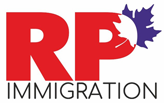Canada just made a big announcement that could change the future for thousands of temporary foreign workers. If you’ve been working in Canada on an employer-specific work permit, you might soon be able to put down permanent roots. By 2027, Canada plans to offer permanent residency (PR) to up to 33,000 foreign nationals who have been supporting the country’s workforce for years. This news comes as part of a larger effort to make the immigration system more inclusive and fair.
So, what does this mean for you or someone you know who holds a work permit? Let’s break it down in simple terms.
Canada’s Promise: Turning Workers Into Citizens
Every year, thousands of people come to Canada to work in industries that need extra hands — like hospitality, trades, agriculture, and more. Many of these workers are on closed or employer-specific work permits, which tie them to one job and don’t give them the freedom to switch employers easily or apply for permanent residency.
But that’s about to change. The Canadian government has recognized that these workers are essential. Without them, many sectors would struggle. To show appreciation and to help build a more balanced immigration system, the government is rolling out a new plan: by 2025 to 2027, up to 33,000 of these workers will be given the opportunity to apply for permanent residency.
Why Is This Happening Now?
Over the years, Canada’s immigration system has leaned more toward selecting skilled workers through points-based programs, like Express Entry. While that approach has helped bring in highly educated and experienced professionals, it has often left behind people doing important but lower-paid jobs — the people cleaning our buildings, cooking our meals, and looking after our elderly.
The pandemic really pulled back the curtain on this issue. Suddenly, many of the so-called “low-wage” jobs were also labeled “essential.” And that got policymakers thinking: shouldn’t these essential workers also be given the chance to stay for good?
In fact, the federal government has been reviewing Canada’s immigration policies to ensure they better reflect who is actually contributing on the ground. Thanks to that review — and a whole lot of advocacy from migrant worker groups — this new PR pathway is now on the table.
Who Will Be Eligible?
Details are still rolling out, but based on what we know so far, these spots will be open to people who are working in:
- Hospitality and accommodations
- Trades and transportation
- Agriculture and food production
- Healthcare and care work
To qualify, workers likely need to have Canadian work experience, hold (or have held) an employer-specific work permit, and meet basic language and other eligibility criteria. If you’re one of those workers, now’s the time to start gathering your documents and getting your affairs in order — because opportunities like this don’t come around often.
Provincial Nominee Programs Play a Big Role
If you’ve ever looked into getting permanent residency in Canada, you probably came across something called the Provincial Nominee Program (PNP). These programs let Canada’s provinces and territories choose immigrants who meet their local labor needs. And they’re going to play a big part in this new PR push.
Of the 33,000 PR spots available, around 21,000 are expected to go through the PNP stream. That gives provinces like Saskatchewan, Alberta, and British Columbia more control to nominate the workers they need most — especially in jobs that aren’t always included in national-level immigration programs.
Why This Matters for Canada
This move isn’t just about helping migrant workers — it’s also a smart decision for the future of Canada’s economy. Let’s face it: with an aging population and a shrinking workforce, Canada needs people. We need people to build our homes, care for our seniors, grow our food, and run our restaurants and hotels.
By offering permanent residency to the people already doing this work, Canada is filling long-term labor shortages while also giving families a chance to build a future here. It’s a win-win.
What Can You Do Next?
If you or someone you know is a temporary worker in Canada, now might be the perfect time to start preparing:
- Keep track of your work hours and employment history.
- Take a language test if you haven’t already — this is usually required for PR.
- Stay on top of announcements from Immigration, Refugees and Citizenship Canada (IRCC).
- Consult with an immigration consultant or lawyer to explore your options.
While the finer details of the program are still being developed, experts suggest these permanent residency pathways could start to open up as early as 2025. And let’s be honest — time flies. If you’re eligible, doing your homework now can save you a lot of stress down the road.
A Step Toward Fairer Immigration
For years, immigrant groups have called on Canada to provide more paths to residency for the people doing essential but often invisible work. This new plan shows that the government is listening. It’s not perfect — 33,000 spots won’t cover everyone — but it’s a big step in the right direction.
Imagine this: someone who’s spent the last five years working long shifts in a hotel kitchen, sending money back home, and building a life bit by bit — they can now dream of staying permanently, bringing their family, and planting real roots in Canada.
That’s powerful. And it shows that Canada values not just the work, but the worker behind it.
Final Thoughts
This announcement could open the door to a better life for tens of thousands of workers. And while some details are still in development, the direction is clear: Canada is looking to make its immigration system more inclusive and reflective of the people who make this country thrive every day.
If you’re part of this hardworking community, stay hopeful and stay informed. Permanent residency could be just around the corner — and with it, a future where you can finally call Canada your forever home.











